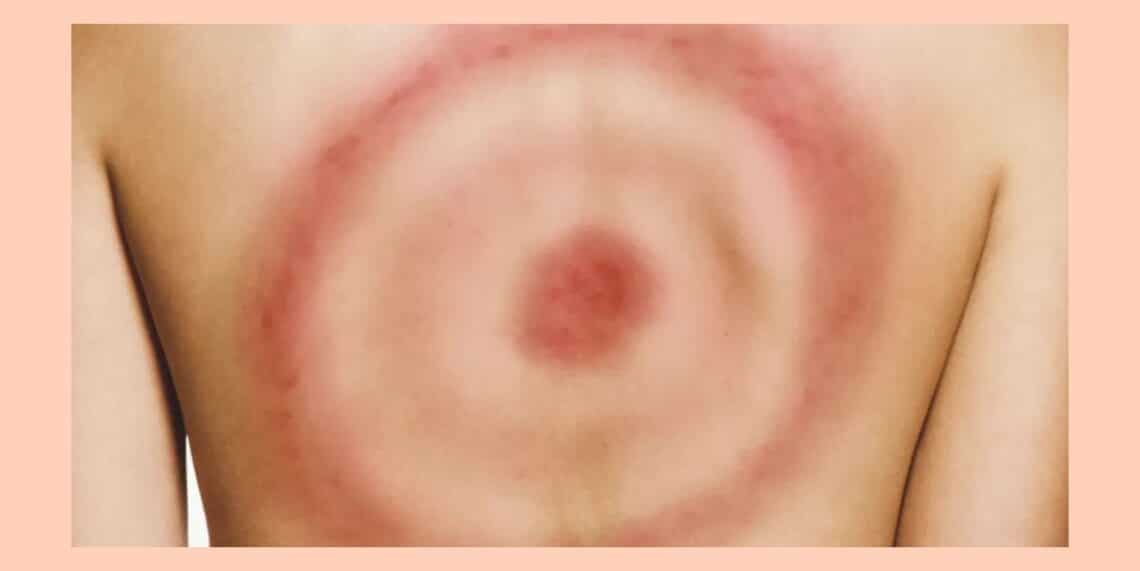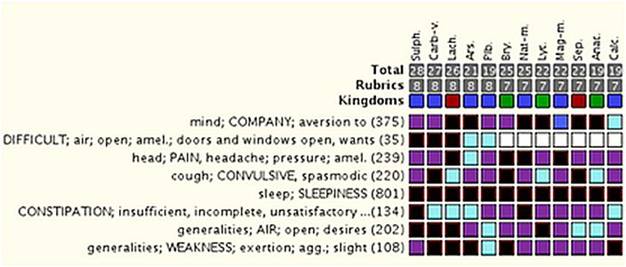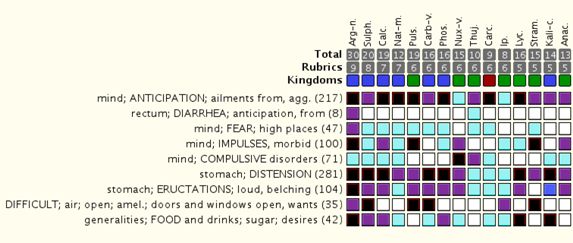Sean came to the NYSH Gap Clinic in April 2013 after struggling with a diagnosis of Lyme disease for a year. He had been receiving both allopathic and alternative treatments for a year with no success. He was 13 years old. Over the course of that year, the joint pains, the intensifying headaches and the persistent coughing caused him to withdraw from school and to be confined at home.
Sean had not been well since a bout of upper respiratory tract infection that the whole family had come down with in February 2012. The rest of the family recovered but Sean was plagued by continuing bouts of dry, hacking cough, sore throat, stomach ailments and, since January 2013, a constant severe headache. He had stopped attending school at the start of the school year in September 2012 and had not returned to school yet when he came to the clinic in April 2013. He had undergone a brain MRI, a CAT scan, blood tests and had been to see many traditional allopathic and alternative practitioners. Some believed he had Lyme disease but others insisted the results were unclear, and one pediatrician suggested that his complaints were psychosomatic. The family, in general, tended to believe in the Lyme diagnosis because he had been diagnosed, treated and recovered from a previous Lyme Disease five years before. This time however, several rounds of antibiotics had failed to effect any improvement and now the parents were considering IV antibiotics but decided to try homeopathy first.
Sean came to the clinic with his mother and like some teenagers, he spoke in monosyllables. He was not very communicative but he did complain about his headache, persistent fits of coughing, some compulsive behaviors, and described himself as introverted. He liked participating in math competitions and playing video games, and had a fear of heights. He didn’t have any specific food related likes or dislikes but did mention that he liked sweets and spicy foods. One area where he spoke eloquently and with a lot of energy was what he described as “a feeling of claustrophobia”:
“Really hard to breathe, really hot, hard to catch my breath, start panicking. Also happened at home, had to run outside. I’m doing my homework and then it starts to get hot and stuffy. But my nose is not stuffy. Just really hot. Feel like the room is getting smaller and I have to run outside. Also happens that I can’t breathe when there is a really strong smell.”
What happens?
“Even if it smells good or bad, I don’t feel like I am getting any air. If there’s a strong smell, I find it’s harder for me to breathe. I think I get dizzy and then I feel lightheaded, like I’m not getting enough air. Every 5-10-15 breaths, it will be really hard for me to catch my breath, like I can’t get enough air, can’t register the breath, it doesn’t click…have to keep breathing, keep breathing…”
What do you mean – can’t register the breath?
“A normal breath is when I’m getting air but then I’m trying and it’s not clicking. In cross country, once I get the normal breath, it’s an advantage, because then I would not need to breathe as much. However deep I breathe, I couldn’t catch it, but then when I could catch it, I could run a lot faster without needing to breathe.”
He also spoke about his fatigue and described it as weakness.
What does your weakness feels like?
“When I take the dog – before, I could run for 4 miles. But now I get out of breath. Like being exhausted. Walking a mile would make me tired. Didn’t want to walk. Want to lie down.”
His mother said that he had been a normal delivery, no childhood issues except one ear infection and an anal hernia. He was precociously intelligent but introverted and only liked being with family. She also mentioned that he could be extremely negative and sulky at times, had an aversion to being touched – a heightened sensitivity to touch and occasional constipation.
Based on this and his comments about being unable to breathe and his feeling of weakness (he was sleeping/in bed for 15+ hours daily), he was prescribed Carbo Vegetabilis 30C – one dose daily.
These are the big idea symptoms that were used for repertorization:
- Air hunger, desire for fresh open air, especially during periods of breathing difficulty
- Constant severe headache
- Coughing fits
- Weakness, unable to exert himself
- Wants to lie down, constant sleepiness
- Constipation
- Introverted
In the first two weeks after the remedy, Sean’s “feeling of claustrophobia” was much less, his weakness started going away to the extent that he started running again and took up golf. His mental energy improved dramatically as well and he started working with a tutor at home to keep up with schoolwork. In the third week, he had a stomach aggravation and his headache increased. When those symptoms continued to aggravate for some time and did not recede, his case was re-examined for a better remedy. He came in complaining about his health in a very anxious way, and he displayed a really negative attitude that had been previously described by his mother. His claustrophobia and his weakness had improved and were no longer a concern, but his state was pretty intense and he now had a wart on his palm. Based on these “big ideas”, his intense headache which had returned, his extreme anxiety of health, his negativity and constant complaining, and the new wart, we prescribed Nitric Acid 200C.
In May, after taking Nitric Acid, Sean felt well enough to go back to school. All of his chief complaints were getting better: his headache, his weakness, his claustrophobia, and his mental energy. However, after returning to school, he started experiencing anxiety about grades and how he would do at school. This was manifested primarily as stomach pain, bloating and what he described as “gassiness”. He also experienced bouts of diarrhea, usually in school or before going to school, and before math competitions. His compulsive behaviors increased. When he was brought in for a follow-up he described his digestive symptoms and said he was craving sweets even more than in the past. He reiterated his fear of heights in a more intense way. In his own words he said:
“Feels like I have an icky mouth, I feel like I will fall, like I’ve lost control of my body… hate it hate it hate it. In sixth grade I did an environmental project. I was on a cliff and you could see miles and miles around and it was really deep. I thought I would lose control of my mind and body and if I didn’t focus very hard on staying sane, I would lose control of my mind and I wanted to run away and go to where the trees were. I was scared that the tip of the mountain would break off, and that I would slide off. Or that I would run off of the edge of the mountain…hate it hate it hate it. Sometimes, I get the urge to open the car door when the car is moving. I get a thought that I want to open the car door, and I have to focus a lot to think about something else so I don’t do it. I just focus and try to do a math problem.”
We combined his persistent symptoms with his new symptoms which included the bloating and diarrhea, his performance anxiety, his fear of heights, and his compulsive behaviors which had recently increased, and we arrived at a prescription of Argentum Nitricum.
The new repertorization included complaints from before, such as weakness, claustrophobia, difficulty breathing and the desire to breathe open air. But it added symptoms that had been overlooked or considered not as important such as his fear of heights, his compulsive behaviors and his fondness for sugary things. It included the new mental symptoms that Sean had disclosed since taking Nitric Acid such as his performance anxiety, his anticipatory diarrhea, and his fear of jumping off a cliff or his impulse to jump out of a running car, as well as his new gastrointestinal symptoms.
Sean was advised to take a single dose of Argentum Nitricum in the 200th potency. This was in September 2013 and Sean was just starting high school. Although he had gone back to school briefly in May, this was a huge undertaking for Sean given that he had been home from school for most of the previous year and a half.
In the first month after the remedy, Sean experienced a lessening of most of his physical complaints. The weakness and claustrophobia were the first to go as well as most of his compulsive behaviors. His headache subsided slowly while he continued to be plagued by his stomach complaints – pain, diarrhea, bloating, and gassiness, in the mornings before school. His stress levels at school were high initially – his workload had increased exponentially from being tutored at home to managing a full course load in high school. He stopped competing in math competitions, which he used to do regularly. He experienced increased abdominal distress, bloating and eructations especially after a sugar binge and he started noticing this aggravation happened after sugar consumption. Soon, his symptoms of anxiety about school and homework along with his stomach symptoms started to decrease. They reappeared briefly but strongly after he received his first set of grades when he realized that his grades were lower than he had expected. But he rebounded on his own, without needing to re-dose at this time.
At first, he needed to re-dose regularly – every three weeks – to keep his gastrointestinal symptoms and anxiety under control. Both the gastrointestinal symptoms and the anxiety would flare up before major math competitions or before tests and exams. Since he competed in math competitions regularly, it was a simple matter to align his dosing schedule with his math competitions to minimize the abdominal distress and the stress generated from performance anxiety. By the end of the year, Sean stopped mentioning his chief complaints in phone updates or follow-ups.
Sean suffered occasional acutes (cold and cough, and fever), which were effectively taken care of by a water dose of the remedy. He reacted well to a bullying incident in 9th grade, arguments with friends and the increasing academic workload. Over the summer of 2014 he realized that his high sugar intake aggravated his GI symptoms consistently and severely, and so he took the initiative to moderate it.
By the fall of 2014, Sean was talking openly, honestly and eloquently in his phone updates. He was able to look at academic disappointments and competitive defeats very calmly (this had aggravated him severely in the past), and he would now plan on how to overcome them. He was able to discuss his feelings openly and was a very different boy from the one who had come to the clinic in the spring of 2013.
Sean has now been on Argentum Nitricum 200C for the last two years. Today, Sean is a healthy, happy, high performing junior in high school. He takes his remedy on an as-needed basis. His chief complaints have never returned. One wonders, was this actually a case of Lyme Disease? Does it matter? Not to us, or to his parents. Sean had arrived in a debilitated state with severe headaches, severe fatigue, a bad cough, and panic episodes, and was so ill that he could not attend school for over a year. Because of homeopathic treatment he is now a happy, high achieving teenager. It may have taken three remedies to arrive at the final result, but the effort was certainly worth it.







Rupali,
Thanks for sharing this case. Irrespective of the conventional diagnosis, the remedies helped address the presenting complaints and worked by way of systematically removing layers of discomfort, till you got to argentum nitricum.
Well done.
Thank you Vatsala. This was a case taken at the Graduate Apprentice Program (GAP) clinic. The philosophy of cure at GAP is to address the totality of symptoms as presented by the patient, and that is what we did in this case. Regardless of the possible Lyme diagnosis, we looked at the symptom complex presented by the patient and suggested the remedy that best fit the case in its entirety. The way we understood the result was that a close similar offered some relief, but the simillimum worked. Selecting the remedy that best fit all the characteristic symptoms in the case, at each step of the case, finally showed us the simillimum which brought complete relief to the patient.
Been fighting Lyme Disease and co-infections including Babesia (which is what sounds like this boy had at least… the air hunger is the major clue) for most of my life. Been using all modalities including homeopathy to recover with significant success but still not well. I’ve seen several practitioners for homeopathy over the years and I’m so grateful for homeopathy and continue to hope and strive for good health.
Dear J,
At NYSH, we have had the most successes when we have looked at the totality of symptoms presented by the patient instead of prescribing specifically for the pathology as diagnosed by allopathic practitioners. Perhaps that could be an approach that might benefit you as well.